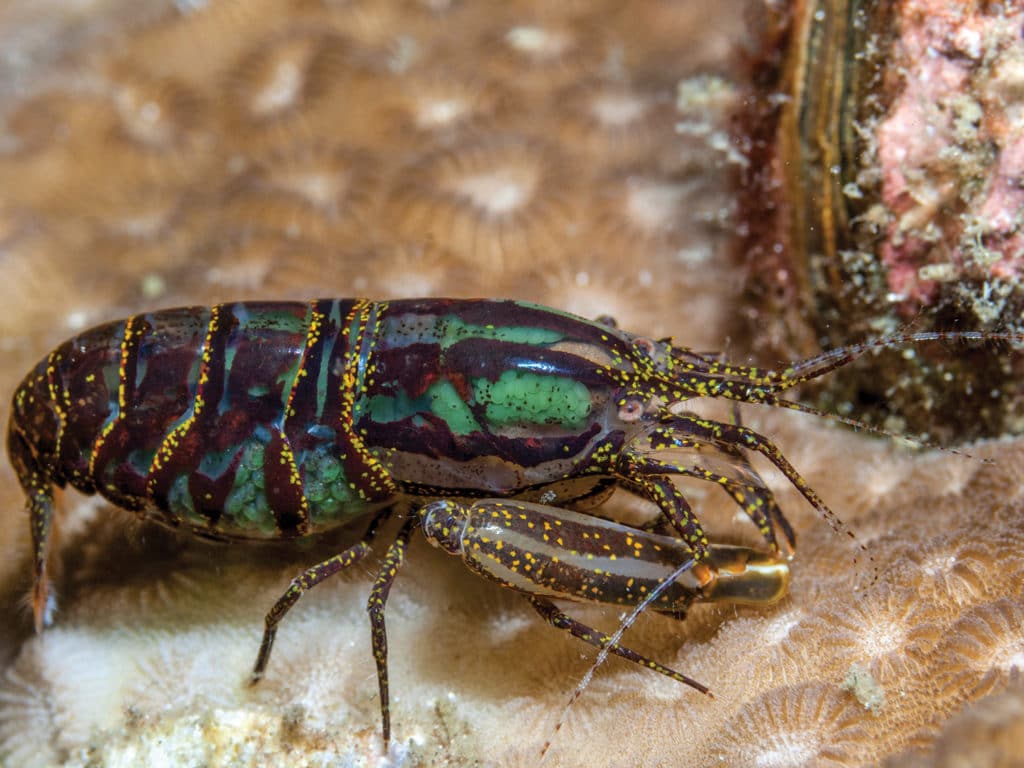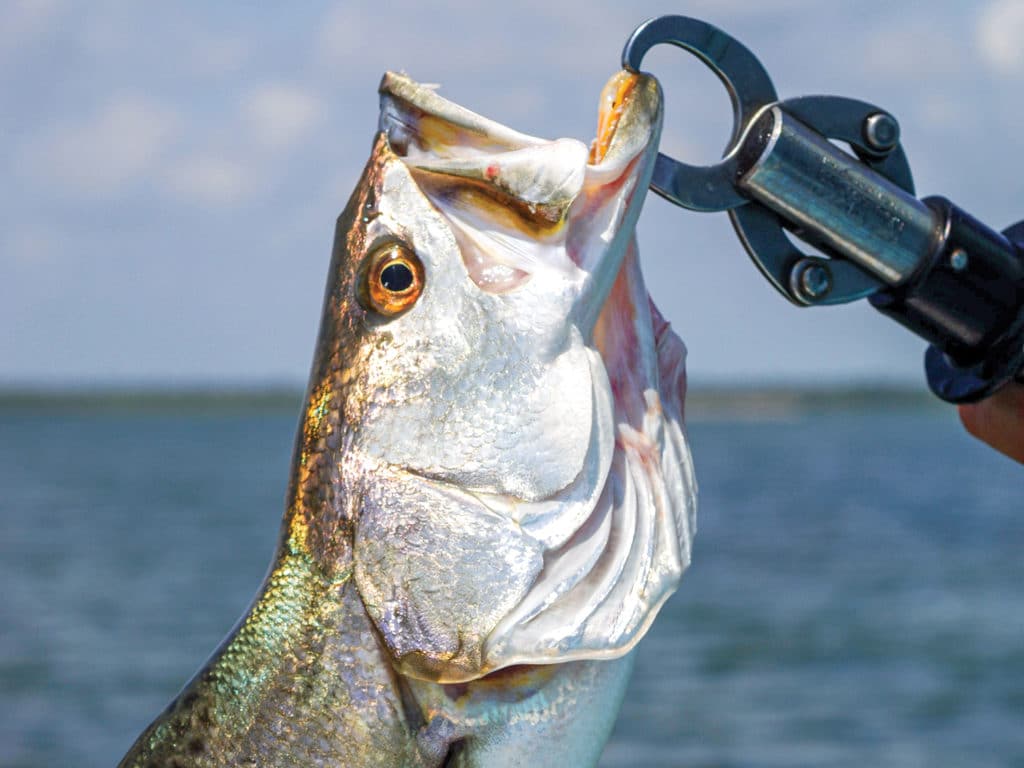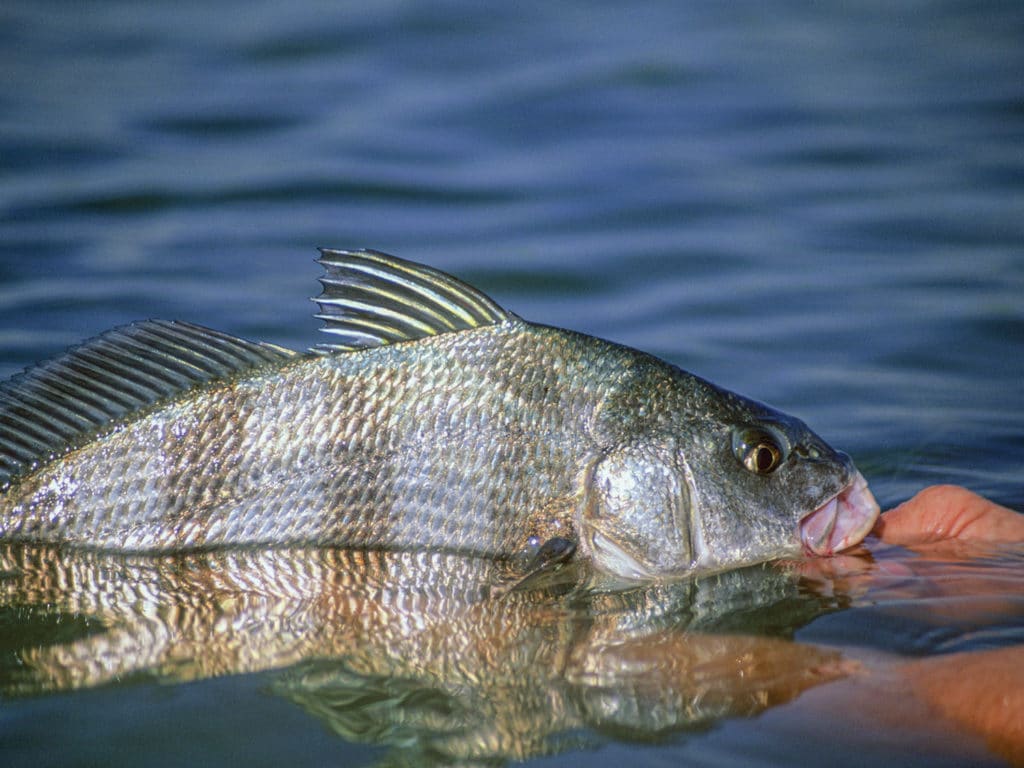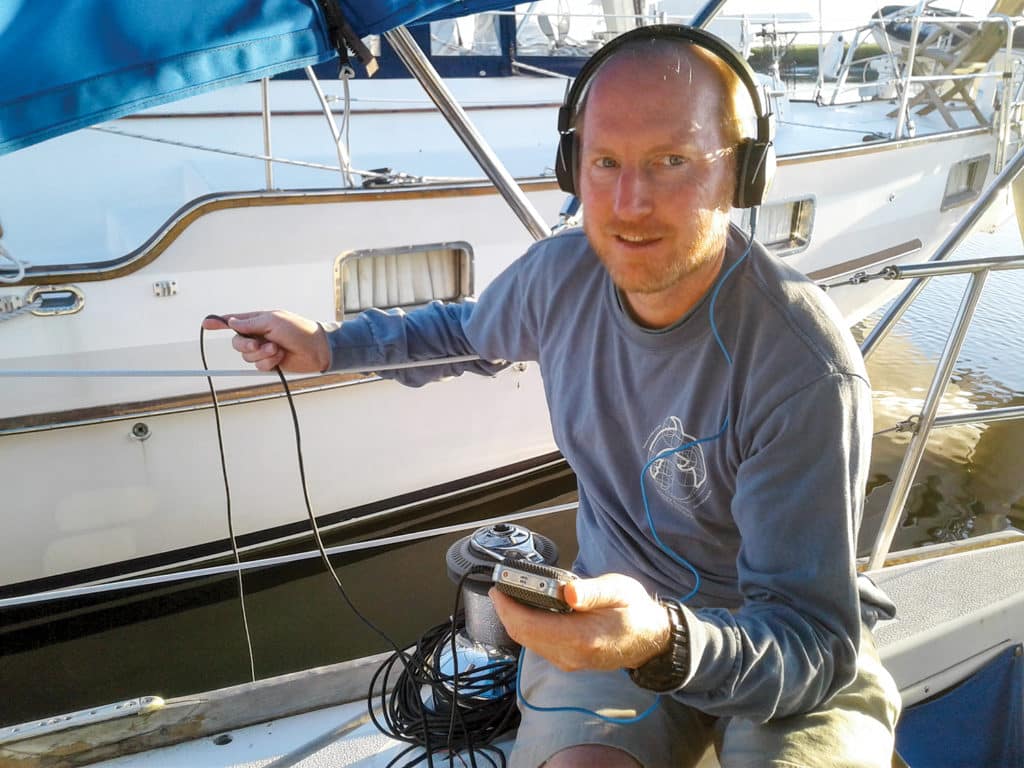
You’ve finally dropped the hook in that lovely little anchorage. Dinner is done, the sun is setting, a sundowner is in your hand, and you’re ready for a quiet night. Then the noises begin: knocks, toots, clicks. Could it be the water tank burping? Is stray current attacking your through-hulls? What the heck is that noise?
As marine biologists, we are often asked these questions. The ocean is surprisingly noisy. Fish, marine mammals and countless invertebrates make sounds. In a world where visibility is limited, sound helps animals find food, attract mates, avoid predators and stay connected with their own kind. Sound is particularly useful in water, where it travels more than four times faster than in air. In a way, your boat’s hull can act as a speaker, allowing you to eavesdrop on your undersea neighbors.
What’s that noise? Whistles or squeaks: Bottlenose dolphins use air to vibrate structures below their blowholes to produce whistles and communicate. Individual bottlenose dolphins, and probably other dolphin species, have signature whistles—their own unique call by which they can be recognized as individuals. Dolphin sonar, or echolocation, on the other hand, is a regular train of clicks or buzzes that is very quiet to the human ear, and is most often used after dolphins have “eavesdropped” on noise-making fish and are homing in on their prey. You’re unlikely to hear echolocation through your hull; whistles are much easier to hear.

Frying bacon or snap, crackle, pop: The snap of snapping shrimp is probably the most common sound in the oceans and can be heard in temperate and tropical waters, especially near shallow hard-bottom habitats. These little shrimp are around 2 inches long but sport one giant claw. As the claw shuts, the plungerlike structure forces out a jet of water so fast that it creates cavitation bubbles. The bubbles implode rapidly, snapping and creating a shock wave that stuns prey. Pound for pound, this little shrimp is the loudest animal in the sea.
Foghorn: The “boat whistle” call of the male toadfish, made to attract females, is produced by vibrating muscles surrounding his swim bladder. Toadfish are found in warm, shallow waters with muddy bottoms, especially near dock pilings, bulkheads, seawalls and oyster reefs. The common species on the U.S. Atlantic Coast is the oyster toadfish, with its simple buuuuurrp call. In the Gulf of Mexico, the Gulf toadfish has a slightly more complex call (bah -doooooo). Toadfish are related to the midshipman fish, which are known to drive liveaboards crazy in San Francisco Bay with their droning hum.

Drumming: Croakers, sea trout, weakfish and drumfish generally sound like a group of gremlins knocking on your hull. They aggregate at night during their spawning seasons, and males make drumming sounds with their swim bladders, sounding like a percussion section that lost its conductor. Sonic muscles in fish are among the fastest-acting muscles known in nature. Spotted sea trout, the most commonly caught inshore gamefish in the Southeast United States, produce a call referred to as the “heartbeat and burp” (bump, bump, bump, blaaaaaah).

Tanker’s horn: The black drum has such a deep, booming call that people living on canals in Florida once lobbied their city council to hire an engineering firm to investigate. If you hear this noise, you’ll know there’s something fishy going on.
Machine-gun bursts or deranged chicken clucking: Silver perch “chorus” in large aggregations over sand flats in warm waters, starting at dusk and lasting late into the night.
Rhythmic clapping near coral reefs: Bar jacks make this noise by grinding their teeth.
Frog croaking or machine gunning: The swim bladders of striped cusk eels are stretched by a pair of sonic muscles, and sound is emitted when the muscles relax and the bladder snaps back into place, sounding like a fast-pulsing frog call. Sailors along the Northeast and mid-Atlantic coast of the U.S. often report hearing cusk eels in the early evening, around sunset.

Want to eavesdrop on the ocean world around you? Check out Dolphin Ear Hydrophones for an affordable way to listen to your noisy neighbors.
Janet and Damon Gannon have been studying how marine animals use sound for more than 20 years, and their work has taken them from the Gulf of Mexico to the Bay of Fundy. They sail their Crealock 37, Fulmar, out of Brunswick, Georgia.
Resources
For more information on sounds in the sea, visit:








